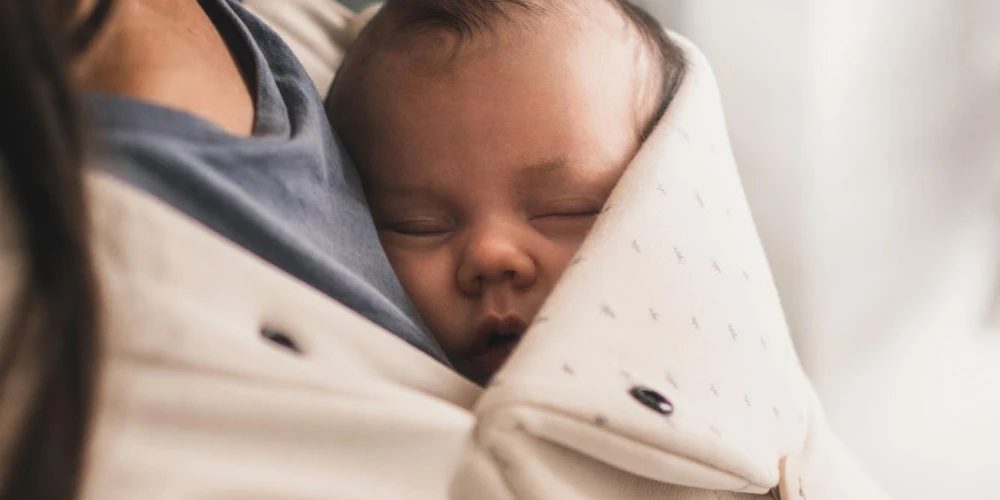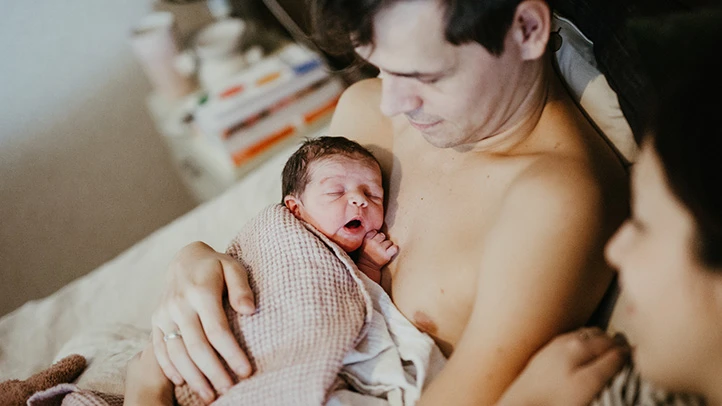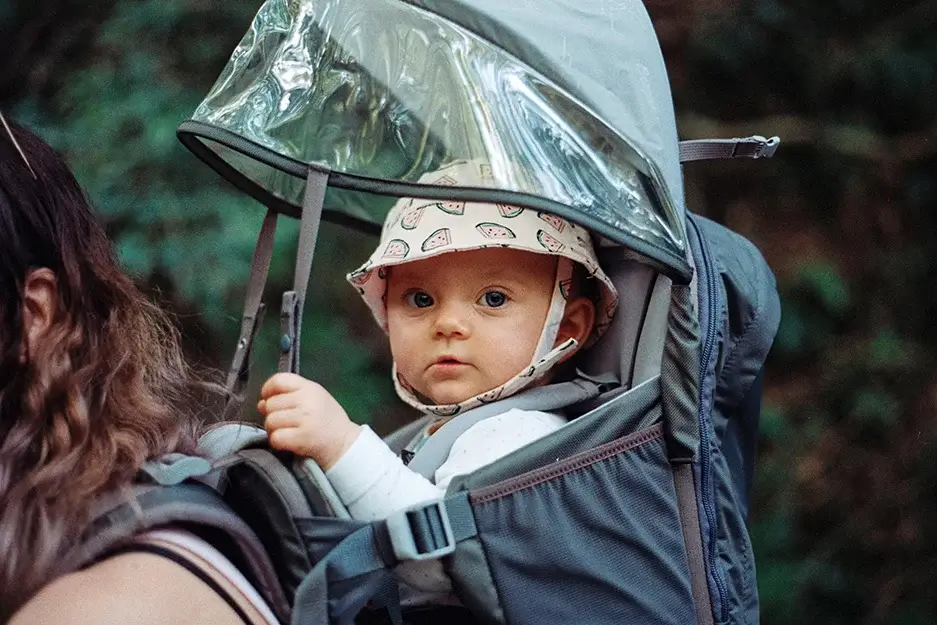It’s no secret that the early years of a child’s life are crucial for building a strong parent-child bond.
In these formative years, every hug, every kiss, and every giggle lays a brick in the foundation of the world of attachment and trust.
Imagine if there was a way to hold your little one close while going about your daily activities.
Welcome to the world of babywearing, a practice that transforms parenting into a hands-free operation without sacrificing a smidgen of closeness.
In fact, babywearing is an extraordinary tool that strengthens that crucial bond between parent and child.
What is Babywearing?
Babywearing, in its simplest definition, is the practice of keeping your baby close and connected to you as you engage in daily activities.
It’s a cosy concept, isn’t it?
This is achieved by using various types of baby carriers, which are cleverly designed tools that support your baby while leaving your hands free.
There are numerous styles to choose from, including wraps, slings, mei-tais, and structured carriers, each offering unique benefits and suiting different needs.
Just like finding the perfect pair of jeans, it’s all about finding what fits and feels right for you and your little one.

The Rich History of Babywearing
If you thought babywearing was a trendy, modern concept, you’d be surprised to know that it’s as old as human civilization itself.
Throughout history, various cultures across the globe have embraced babywearing for its practicality and the closeness it brings.
From the back-strap looms of Mayan mothers, and the cradleboards of Native American tribes, to the simple yet efficient kangas of Africa, babywearing has been an integral part of child-rearing.
As societies evolved, so did babywearing practices.
The modern carriers we see today are a reflection of this rich tapestry of history, stitched together by generations of parental love and ingenuity.
The Science Behind Babywearing
Don’t let the simplicity of babywearing fool you.
This practice triggers some pretty fascinating biological responses that foster a strong bond between parent and child.
For starters, babywearing promotes skin-to-skin contact, which can lead to the release of oxytocin, often referred to as the “love hormone.”
This hormone enhances feelings of affection and attachment, paving the way for a profound emotional connection.
Furthermore, babywearing aligns perfectly with the principles of Attachment Theory, suggesting that close physical contact with parents promotes security and healthy emotional development in infants.
An increasing body of research underpins the numerous benefits of babywearing.
From boosting breastfeeding success to reducing crying and promoting better sleep, science adds an authoritative voice to what parents have known instinctively for generations –
babywearing creates an empowering bond, filled with love and trust.

Babywearing Benefits
Let’s move from the ‘what’ and the ‘why’ to the ‘wow.’ Here’s a run-down of some fabulous benefits of babywearing:
#1 – Improves Parent-Baby Bonding
Babywearing is the go-to strategy for boosting the bond between you and your tiny bundle of joy.
When you’re wearing your baby, you’re not just carrying them, you’re also nurturing a deep, lasting connection.
What’s the secret ingredient in this heartwarming recipe? Skin-to-skin contact.
This close cuddle-fest supercharges the release of oxytocin – the so-called ‘love hormone’.
So, each time you wear your baby, you’re not only creating a snuggle party for two, but you’re also sparking a domino effect of attachment, warmth, and pure, unadulterated love.
And I’m not just pulling this out of thin air.
A study by Bystrova et al. (2009) found that skin-to-skin contact between parents and their newborns immediately after birth led to significantly higher maternal attachment scores.
So, babywearing is more than just a parenting trend – it’s the secret sauce to an incredible bond with your baby.
#2 – Boosts Brain and Social Development
Little minds are like sponges, and when you wear your baby, you’re inviting them to soak up the world from a prime vantage point.
From this cosy perch, babies learn about communication, social cues, and language, simply by watching and listening to you.
Studies found that babies carried for at least one hour daily scored better on the Bayley Scales of Infant Development, a key measure of cognitive and motor development.
So, with every step you take, you’re not just getting from A to B, you’re taking strides towards your baby’s intellectual growth.

#3 – Reduces Crying and Emotional Stress
Swaddled in the comforting confines of a carrier, babies find themselves in a sweet cocoon of security and bliss.
They tune into the reassuring lullaby of your heartbeat, paired with the gentle ebb and flow of your breath – a soothing serenade reminiscent of their cosy, womb-time memories.
This sensory symphony helps to dial down the fuss and turn off the waterworks.
And what’s better – babywearing actually helps decrease cortisol levels, the infamous ‘stress hormone.’
So, while your little one is nestled close, their brains are telling them that it’s time to relax and rest.
And let’s not forget the parental perks. With less crying and a happy, snug-as-a-bug baby, parents find their own stress levels also decrease.
The result? A harmonious environment where everyone’s happy hormones are on the rise!
#4 – Better Sleep for Both Mum and Bub
Rocking a baby to sleep has been a parent’s go-to move since the beginning of time.
This is just yet another great benefit of babywearing.
As you sway your way through your day – much like what you did when you were 9 months pregnant, your baby is getting swayed to sleep.
This also helps establish better sleep patterns for bub over time.
Plus, with the baby sleeping soundly, parents can also catch a wink or two.
And if you’re really struggling to get shut-eye, you can always hire a doula.
A well-rested baby equals a well-rested parent, it’s a win-win!
#5 – Reduces Postnatal Depression
Postnatal depression is a heavy cloud that can cast a shadow over the early days of motherhood.
Studies have indicated that the physical closeness encouraged by babywearing can help keep this cloud at bay.
A 2016 study found a significant decrease in postnatal depression scores for mothers practising skin-to-skin contact, a key aspect of babywearing.
So, while you’re cradling your baby close, you’re also holding onto an effective tool to protect your mental health.
Babywearing, it seems, is more than just a parenting practice—it’s an embrace that keeps giving, one step at a time.

#6 – Helps Preemie Development
For those tiny warriors who step into the world a little earlier than expected, the journey is filled with numerous challenges.
Preemies, often require extra care and support for their developmental milestones.
This is why babywearing is super important.
Research reveals that kangaroo care, or skin-to-skin contact through babywearing, aids in the development of premature infants.
In fact, studies have found that preterm infants who experienced kangaroo care showed better cognitive development and executive functions later in life than those who didn’t.
#7 – Increased Milk Supply
Talk about a win-win situation.
Babywearing not only brings you closer to your little one but also plays a significant role in breastfeeding success.
Wondering how? Well, the close proximity and skin-to-skin contact help maintain hormonal balance, particularly prolactin levels, which aids in lactation.
So, not only does babywearing help your little munchkin feel safe and secure, but it also ensures they are well-fed.
#8 – More Stable Weight Gain
Every parent relishes seeing their little one grow and hit those healthy weight milestones.
Interestingly, babywearing can play a supportive role in this too.
The close contact and movement while babywearing appear to aid digestion and lead to more stable weight gain.
This is because, as mentioned before, skin-to-skin contact reduces stress levels, allowing the baby to switch gears into ‘rest and digest’.
And as a result, also increases their appetites.

#9 – Easier to Exercise and Lose Post-Baby Weight
If you’re a new mother, finding time for yourself, let alone exercise, can seem like an impossible task.
But babywearing is like having your very own portable, cuddly gym.
It allows you to stay active, do light workouts, and even join babywearing dance classes.
This can facilitate postpartum recovery and help lose the baby weight – not that there’s anything wrong with it.
After all, everybody is beautiful, and every mother is a powerhouse.
Babywearing isn’t about promoting unrealistic weight loss ideals but about encouraging healthy activity and self-care for mothers.
Give babywearing a try
With its ancient roots and myriad benefits, it’s no surprise that this practice has stolen the hearts of parents across the globe.
From the oxytocin-fuelled bond, it nurtures to the unique support it lends to our preemie heroes and the quiet yet empowering role it plays in a mother’s postpartum journey.
Remember, babywearing doesn’t come with a guarantee of angelic babies.
But what it does promise is an extra pair of ‘hands’, a stronger bond, and a generous dash of comfort in the whirlwind of parenthood.
As you embark on or continue your journey as a parent, consider giving babywearing a try.
After all, closeness comes in many forms, and sometimes, it’s wrapped up in a cosy carrier, swaying gently to the rhythm of your heart.


